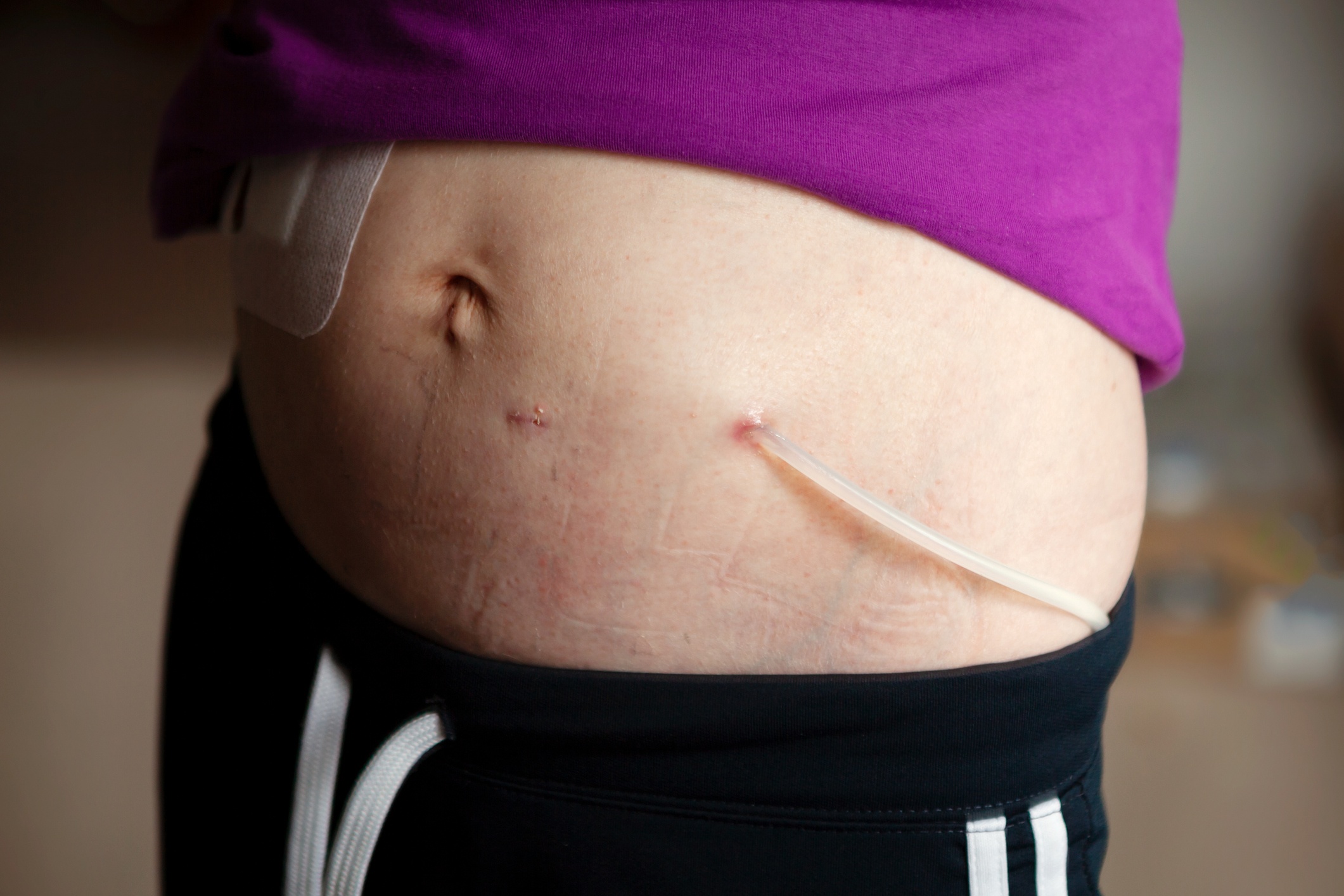
Hospitalized patients may experience acute kidney injury (AKI), putting them at increased long-term risk for mortality, do novo or worsening chronic kidney disease (CKD), and end-stage renal disease (ESRD). Compared with patients who do not develop AKI while hospitalized, there is a 40% increased risk of death in the 2 years following discharge among those discharged after an episode of AKI. Possible drivers of the increase in risk of death include higher rates of hypertension and cardiovascular events following an episode of AKI.
There are no known effective therapies for AKI. Recent data suggest a 24% reduction in risk of death among patients with severe AKI requiring dialysis who receive nephrologist follow-up care; however, there are few data on the specific processes of care that modify outcomes after AKI episodes.
Reduction in the prevalence of cardiovascular events and in mortality has been associated with the use of angiotensin-converting enzyme inhibitors (ACEIs) and angiotensin receptor blockers (ARBs). Sandeep Brar, MD, and colleagues recently conducted a retrospective cohort study designed to examine whether the use of an ACEI or ARB is associated with improved outcomes following hospitalization in patients with AKI. Results of the study were reported online in JAMA Internal Medicine[doi:10.1001/jamainternmed.2018.4749].
The study utilized data from the Alberta [Canada] Kidney Disease Network population-based database to identify patients ≥18 years of age residing in Alberta who were admitted to the hospital between July 1, 2008, and March 31, 2011, and had an episode of AKI during hospitalization.
Inclusion criteria were at least one outpatient serum creatinine measurement within 180 days prior to hospital admission to establish baseline kidney function, and one or more measurements during hospitalization to establish AKI. Among patients with more than one hospitalization during the study period, the first (index) was the only hospitalization examined. Exclusion criteria were death or progression to ESRD (defined as estimated glomerular filtration rate <15 mL/min/1.73 m2, long-term dialysis, or prior kidney transplant) prior to or following the index hospitalization. Follow-up continued for a minimum of 2 years following the discharge date until March 31, 2015.
AKI was defined as an increase in serum creatinine concentration of ≥50% during hospitalization or of 0.3 mg/dL within 48 hours and/or a need for dialysis during the index hospitalization. AKI severity staging was determined via the Kidney Disease Improving Global Outcomes AKI guidelines. A need for short-term dialysis was determined using a validated approach based on diagnosis and procedural administrative codes.
The primary outcome of interest was all-cause mortality. Secondary outcomes included renal-related hospitalization, ESRD, and a composite outcome of ESRD or sustained doubling of serum creatinine concentration.
A total of 59,951 patients ≥18 years of age residing in Alberta, Canada, were hospitalized with an episode of AKI during the study period. Following application of inclusion and exclusion criteria, the study cohort included 46,253 patients. Mean age was 68.6 years, 52.8% (n=24,436) were male, and 85.9% (n=39,738) resided in an urban location; 50.6% (n=23,407) had prior CKD. The mean number of hospitalizations during the 3 years prior to the index hospitalization was 1.4; 17.0% (n=7848) had a cardiac diagnostic code as the primary diagnosis for the hospitalization. Most (75.9%, n=35,104) had hypertension, 38.2% (n=17,657) had diabetes, 29.2% (n=13,499) had heart disease, and 20.9% (n=9690) had a history of stroke or transient ischemic attack.
In all, 54.5% (n=25,211) of patients were using an ACEI or ARB within 6 months prior to the index hospitalization; 48.0% (n=22,193) were using an ACEI or ARB 6 months after discharge. Thirty-eight percent (n=17,852) never used an ACEI or ARB; 6.9% (n=3190) received a new prescription within 6 months following discharge. Forty-one percent (n=19,003) continued using an ACEI or ARB within 6 months after discharge, and 13.4% (n=620) of previous users did not restart use of an ACEI or ARB following discharge.
Of the total cohort, 9456 patients were matched 1:1 with similar patients who had no dispensed ACEI or ARB prescription within 6 months following discharge, resulting in a matched cohort of 18,912 patients. In the matched analysis, the adjusted hazard ratio (HR) for mortality associated with ACEI or ARB use after hospital discharge compared with no ACEI or ARB use was 0.85 (95% confidence interval [CI], 0.81-0.89).
There was an association between ACEI or ARB use with higher risk of renal-related hospitalization (acute renal failure, congestive heart failure, and hyperkalemia) (HR, 1.28; 95% CI, 1.12-1.46). There was no association between ACEI or ARB use and progression to ESRD or between ACEI or ARB use and the composite end point of progression to ESRD or sustained doubling of serum creatinine concentration.
Both new ACEI or ARB use (HR, 0.85; 95% CI, 0.78-0.93) and continued ACEI or ABR use (HR, 0.77; 95% CI, 0l.73-0.80) after hospital discharge were associated with lower mortality compared with no ACEI or ARB use. Conversely, there was an association between stopping use of an ACEI or ARB prescribed prior to hospital admission and increased mortality (HR, 1.23; 95% CI, 1.17-1.30). In patients who were prescribed a new ACEI or ARB or who continued use of an ACEI or ARB after discharge, rates of renal-related hospitalization were higher than in patients with no ACEI or ARB use.
The researchers cited some limitations to the analysis, including the retrospective use of administrative and laboratory data and the observational design.
In summary, the researchers said, “We found that the use of an ACEI or ARB in patients with AKI after hospital discharge was associated with lower mortality but a higher rate of hospitalization for a renal cause. This observation requires further evaluation in prospective studies evaluating postdischarge care strategies for patients with AKI. In particular, our results suggest a need for a trial to evaluate treatment with an ACEI or ARB in patients with AKI to determine whether this intervention improves long-term outcomes in high-risk patients.”
Takeaway Points
- Researchers in Canada conducted a retrospective cohort study to examine whether the use of angiotensin-converting enzyme inhibitors (ACEIs) or angiotensin receptor blockers (ARBs) is associated with improvements in long-term outcomes in patients who experienced an acute kidney injury (AKI) while hospitalized.
- The analysis included data on 46,253 adults ≥18 years of age with an AKI episode during hospitalization between July 1, 2008, and March 31, 2015.
- There was an association between ACEI and ARB use and lower risk for mortality; however, the risk for renal-related hospitalization was higher among those with new or continued ACEI or ARB use following discharge







 © 2025 Mashup Media, LLC, a Formedics Property. All Rights Reserved.
© 2025 Mashup Media, LLC, a Formedics Property. All Rights Reserved.